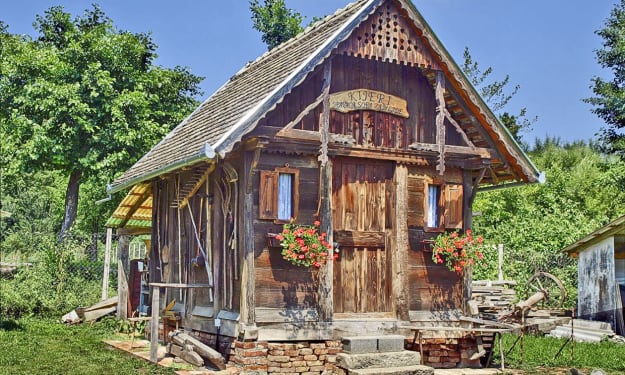
Around 74,000 years ago, one of the largest apocalypses that humanity has ever experienced occurred on the territory of modern Indonesia. It was an eruption of a super volcano on Mount Toba, which was also the biggest eruption on Earth over the last two million years. Even the tragedy of Pompeii, when the volcano Vesuvius destroyed the entire city, was not so large-scale.
At the time of the Toba eruption, humanity was as close to extinction as ever, and the problem wasn't in the volcano itself, but in the consequences that came after. Some studies suggest that only three to ten thousand people could survive the period after the eruption. During the disaster, Toba released millions of tons of volcanic ash and soot, which spread across the sky, blocking the sun in India, Indonesia, and over the Indian Ocean. Some scientists claim that the world has been plunged into a volcanic winter for several decades. The volcanic ash contained sulfur dioxide that reflected sunlight, and the dust and ashes didn't settle for a long time. This may have flown all over the planet, destroying many living things. A lot of plants couldn't survive because of the lack of sunlight, and the Earth's temperature dropped by several degrees, which led to new disasters.
Even in the modern world, such weather can cause significant problems for the global economy and create financial crises worldwide. The last period similar to the Ice Age happened at the beginning of the 19th century when Mount Tambora in Indonesia exploded and released millions of tons of pumice, soot, and volcanic ash into the sky. People who lived on a volcanic island got the most severe damage in the first few minutes, but then the eruption's consequences began to reach the whole world. Volcanic ash again blocked sunlight and led to one of the coldest years in North America and Eurasia. This year, 1816, is better known in history as the year without summer. The ash cloud increased humidity and lowered the temperature in many areas in the summer of 1816. In central and western Europe and North America, a humid climate and cold weather destroyed the harvest. Prices for goods rose, and poor people lost access to food. Logistics and transport also suffered.
In the 1930s, another disaster occurred, but this time it was caused not only by nature but also by people. At that time, many countries were heavily dependent on crops, and vast territories were sown with them. People were engaged in excessive farming. Therefore, when a severe drought began, the soil was quickly depleted, and the ground ran out of nutrients necessary for the growth of wheat and corn. This led to the fact that the top layer of soil was turned into tiny dust. Then, westerly winds hit such states as Colorado, Nebraska, Texas, and Oklahoma. They rose the dust into the air and formed thick clouds. This period is considered the most challenging of the Great Depression. It's the Dust Bowl, and it lasted eight years and forced many people to leave their homes and move to other states.
Despite all these disasters, humanity has always survived in the most challenging conditions. However, it's important to take action to prevent or minimize the impact of such catastrophes. For example, efforts to combat climate change can help prevent the occurrence of severe weather events and other natural disasters. Investing in disaster preparedness and emergency response systems can also help mitigate the impact of such events when they do occur.
In addition to these measures, it's also important to consider the ethical implications of who gets to survive in the aftermath of a global catastrophe. While some may be able to retreat to remote islands or underground bunkers, many others may not have the means to do so. It's important to work towards a more equitable and just society that prioritizes the well-being of all its members, regardless of their wealth or social status.
Ultimately, while it's true that humans have survived many global catastrophes in the past, it's important to learn from these experiences and take proactive steps to prevent or mitigate the impact of such events in the future. By working together and prioritizing the well-being of all, we can build a more resilient and sustainable future for ourselves and future generations.
Throughout history, humans have faced numerous global catastrophes that have threatened their survival. These catastrophes have taken many forms, including natural disasters, diseases, wars, and environmental crises. While some of these events have been caused by nature, others have been the result of human actions.
One of the most devastating global catastrophes in human history was the Black Death, which occurred in the mid-14th century. This was a pandemic that swept through Europe, Asia, and Africa, killing an estimated 75-200 million people. The disease was caused by the bacterium Yersinia pestis, which was transmitted to humans through fleas that lived on rats. The Black Death had a significant impact on European society, causing massive population declines, social disruption, and economic instability.
Another global catastrophe that had a profound impact on human history was the Spanish flu pandemic of 1918–1919. This was a deadly strain of influenza that infected an estimated 500 million people worldwide, killing between 50 and 100 million people. The Spanish flu was one of the deadliest pandemics in history and had a significant impact on global health, the economy, and society.
In addition to pandemics, humans have also faced numerous natural disasters that have caused significant damage and loss of life. One of the most devastating natural disasters in recent history was the Indian Ocean earthquake and tsunami. This was a massive earthquake that occurred off the coast of Sumatra, Indonesia, and triggered a massive tsunami that struck many countries around the Indian Ocean. The disaster killed an estimated 230,000 people and caused billions of dollars in damage.s have also faced environmental catastrophes that have had a significant impact on the planet's ecosystems and biodiversity. For example, climate change has caused rising sea levels, more frequent and severe weather events, and the loss of habitats for many species. Human activities such as deforestation, pollution, and overfishing have also had a significant impact on the environment and threaten the survival of many species.
Despite these challenges, humans have shown remarkable resilience and adaptability in the face of global catastrophes. Advances in science, technology, and medicine have helped us better understand and respond to these events, and many countries have invested in disaster preparedness and emergency response systems to minimize the impact of future disasters.
In conclusion, global catastrophes have had a profound impact on human history and our planet's ecosystems. While we cannot always prevent these events from occurring, we can take proactive steps to minimize their impact and work towards a more resilient and sustainable future. By working together, we can build a world that is better equipped to face the challenges of the 21st century and beyond.
About the Creator
Eslam Abo
Hello !
Life is continuous and does not stop. There are events and stories that happened in the past and happened in the present as well as the future.
I find joy in discovering and reading and want to share it with you.






Comments
There are no comments for this story
Be the first to respond and start the conversation.